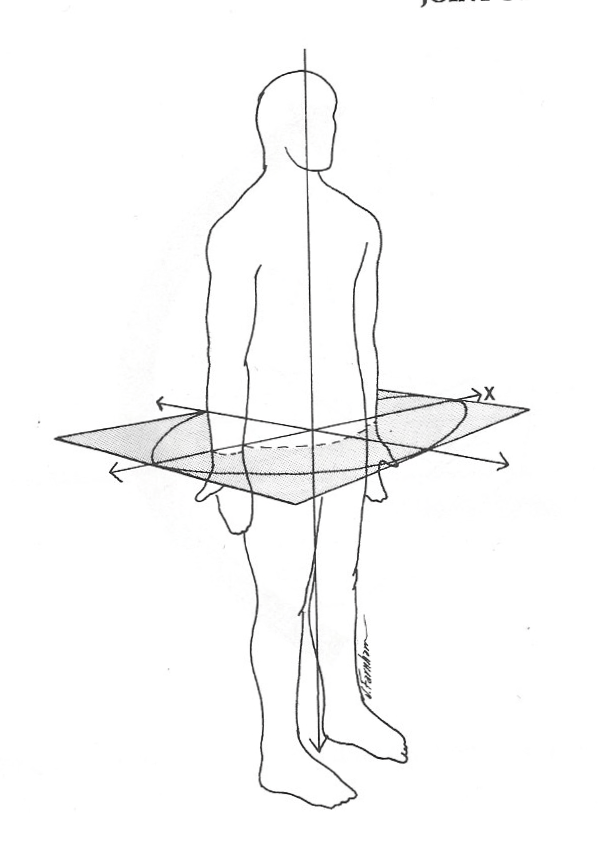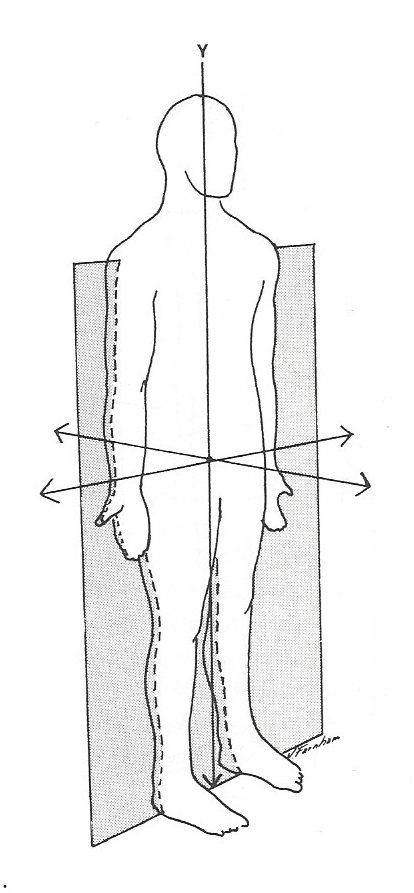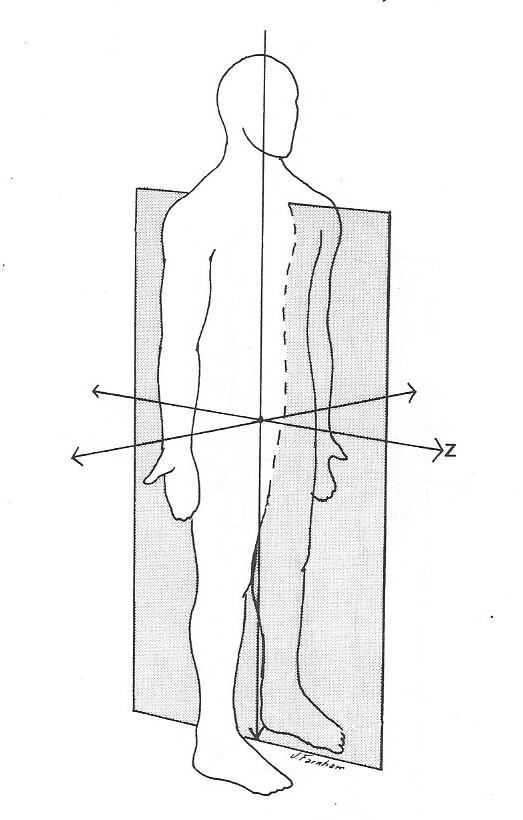Body reading is a valuable skill any Manual Therapist should practice. The essence of the skill is to build a working knowledge of the ideal center of gravity of the human body and to be able to effectively guess the center of mass of the body that you are reading. Variances between these two sides indicate imbalances that offer clues to what to do to improve physical function. These variances also suggest which evolutionary layer is most active in the imbalance.
For this website, a simpler form of body reading is described, which is adequate for suggesting therapeutic tactics. Here we divide the body through its midpoint in the planes of the three dimensions: Top/Bottom, Left/Right, and Front/Back.
TOP/DOWN: TRANSVERSE PLANE
Does the body mass appear more dominant above/below the horizontal midline?
Focus 2/3rds of the work on the less dominant side.
Homolateral Movements
Movement of body parts on the same side of the body in a synchronized manner. Unlike contralateral movement, which involves opposite sides working together, homolateral movement might involve, for example, the right arm and right leg moving together.
Self-Help Integrative Exercises
The 5 Tibetan Rites are very helpful for integrating structure and function across these midlines. The is a post discussing these exercises here:
5 TIBETAN RITES
FRONT/BACK: FRONTAL PLANE
Does the body mass appear more dominant between the front and back of the body, or is there a slumped forward or hyperextended appearance?
Focus 2/3rds of the work on the less dominant side.
Homologous Movements
Motor actions where the same parts of the body on both sides move simultaneously in the same direction. For example, when both arms are extended forward together, both legs kick simultaneously while swimming, or both hands clap together.
Self-Help Integrative Exercises
The 5 Tibetan Rites are very helpful for integrating structure and function across these midlines. The is a post discussing these exercises here:
5 TIBETAN RITES
SIDE/SIDE: MEDIAN PLANE
Does the body mass appear more dominant on one side? Baseball pitchers often have an extreme example of this asymmetry. More common is a “hip hiking” pattern which is dominant on one side.
Focus 2/3rds of the work on the less dominant side.
Contralateral Movements
Involve parts of the body on opposite sides moving about each other. For example, when the left arm and right leg move in a coordinated manner, as seen in activities like walking or running.
Self-Help Integrative Exercises
The exercises in this post will be helpful:
CROSS CRAWL
GENERAL EXERCISE TO DEVELOP GLOBAL INTEGRATION
My recommendation for all clients is to develop their:
FOREFOOT GAIT
TOUCH THERAPY STARTER SUGGESTIONS
If you don’t have a good touch therapy inspiration, here is an assortment of excellent places to start. Use the assessment above to inform your focus:
RUBBING POINTS
STRUCTURE FACILITATES FUNCTION THREE-DIMENSIONALLY
A fossilized Bison vertebrae illustrate Functional interactions within Structure across three spatial dimensions through time:



